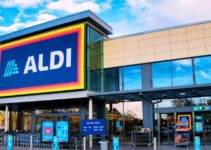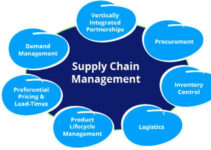Marks & Spencer (M&S) is a retail chain British multinational company. Thomas Spencer and Michael Marks founded the retail chain company in 1884. Today, we’ll discuss the Marks & Spencer value chain analysis of M&S supply chain analysis; primary and supporting activities in the process of value chain analysis Example Company. They are inbound and outbound logistics, operations, marketing, and customer service; infrastructure, HRM, technology, and procurement as an application of the value chain analysis process.
Marks & Spencer (M&S) Suppliers Factories in Different countries
- Estonia, Portugal, France: 1
- Poland, Egypt: 2
- Taiwan, Madagascar, Thailand: 3
- Indonesia: 6
- Pakistan: 7
- Italy: 9
- UK: 12
- Cambodia: 23
- Vietnam: 28
- Sri Lanka: 38
- Turkey: 67
- Bangladesh: 75
- India: 94
- China: 196
The Marks & Spencer Value chain analysis of M&S supply chain analysis would analyze the primary and supporting activities in the process of value chain analysis. They’re inbound and outbound logistics, operations, marketing, and services; infrastructure, HRM, technology, and procurement. Here’s supply chain analysis of M&S value chain analysis company example as follows;
Value Chain Analysis of M&S
Let’s discuss the primary and supporting activities involved in the process of Marks & Spencer value chain analysis of M&S supply chain analysis. It is an application of value chain analysis based on Porter’s model; some of the key elements and components of value chain analysis are as follows;
Primary Activities of M&S
The primary activities are directly involved in the production of products and goods and adding value to the retail chain company. Some of the five main primary activities in the Marks & Spencer value chain analysis of M&S supply chain analysis are as follows;
Inbound Logistics of M&S
I-Large Suppliers Network
Marks & Spencer (M&S) has established a very large network comprising over 1000 suppliers and factories in more than 55 countries across the world. The large suppliers network ensures the smooth supply of food products, home items, beauty products, and clothing at its chain stores worldwide. It reduces the risk factor by diversifying the suppliers’ network.
II-Responsible Sourcing
Marks & Spencer (M&S) collaborates and partners with various organizations and introduces multiple programs to ensure responsible and ethical sourcing of raw materials, supplies, and components. Some of the main supportive responsible sourcing organizations are as follows;
- 3keel
- BRC Global Standards
- SAI Global
- FSIG
- Groceries Code Adjudicators
III-Suppliers Code of Conduct
In order to regulate the suppliers and ensure compliance with human rights standards; Marks & Spencer (M&S) has set up a strict code of conduct and regulations relevant to UNGPs. It comprises of following elements;
- No exploitation of labor
- Beware of modern slavery
- No discrimination of any type
- Complying with women’s right
- Suppliers training program to improve their capacity
- Improving the livelihood of workers
- Paying the minimum wages of workers
Outbound Logistics of M&S
I-Transports & Logistics
Marks & Spencer (M&S) partners up with various 3rd party logistics service providers for the transportation and distribution of products and goods. They move goods and supplies from suppliers and production factories to distribution centers warehouses and to retail stores. However, Gist and Hermes are the main delivery and transportation partners of the company.
Operations of M&S
I-Production Factories
Marks & Spencer (M&S) has established a very large network of over 1000 factories in various countries across the world. They receive raw materials and supplies from verified suppliers and vendors and manufacture products and goods based on the order and design requirements of the company. The diverse network of factories in various countries decreases the production cost.
II-Warehouses & Distribution Centers
Marks & Spencer (M&S) has approximately 20 warehouses and distribution centers in various countries worldwide. They receive finished goods from production factories, and temporary stores organize the stock, package, and label, and then send them to the retail chain stores based on their order quantity requirements.
Marketing & Sales of M&S
I-Marketing & Advertisement
Marks & Spencer (M&S) runs various types of marketing and advertisement campaigns for the promotion of its clothes, beauty products, and brands. The retail chain brand employs multiple media channels like TV, print media, social media, digital media, and social media platforms to approach the target customer market.
Some of the main celebrities that have appeared in Marks & Spencer (M&S) commercials are as follows;
- David Beckham
- Lisa Snowdon
- Helena Christensen
- Claudia Schiffer
- Myleene Klass
II-Retail Chain Stores
Marks & Spencer (M&S) has established a network of roundabout 1500 retail chain stores in various countries worldwide. The brand’s chain stores play a key role in directly connecting with the end consumers and selling its products and goods to the targeted customer market.
Services of M&S
Marks & Spencer (M&S) offers a wide range of products and services to customers. Additional services along with the tangible products improve the overall shopping experience of the customers. However, some of them are as follows;
- Customer support service
- Renewable energy
- Financial services
- Affordable price range
Supporting Activities of M&S
Supporting activities are indirectly involved in the production of products and goods and adding value to the retail chain company. Some of the main supporting activities in the Marks & Spencer value chain analysis of M&S supply chain analysis are as follows;
Infrastructure of M&S
Marks & Spencer (M&S) has established a very large infrastructure of production and manufacturing factories; distribution centers and warehouses, and retail chain stores. It allows the company to smoothly perform its various operations from production to warehousing and distribution. As a result, the chain store brand timely delivers the products to the end consumers without any disruptions.
HRM of M&S
Marks & Spencer (M&S) has employed roundabout 73000 employees to manage its global retail operations. The human resource management department of the company plays a key role in building a large and diverse employee network, empowering women, complying with human rights standards, and offering equal employment opportunities regardless of any differences.
Technological Development of M&S
Marks & Spencer (M&S) invests a significant amount of capital resources in research and technological development. It allows the company to use the latest tools, software, systems, equipment, and resources in its production and manufacturing units, warehousing facilities, and retail chain stores. However, it helps the company to save costs by efficiently performing various operations.
Procurement of M&S
Marks & Spencer (M&S) is highly careful and cautious about the ethical and sustainable procurement of raw supplies, materials, resources, and components. The retail chain brand has set up clear regulations for suppliers to ensure their compliance with human rights standards.
Conclusion: M&S Value Chain Analysis Example Company | Application of Value Chain Analysis Process
After an in-depth study of the value chain analysis of Marks & Spencer (M&S); we have realized that Marks & Spencer (M&S) is the world’s leading retail chain brand. If you are learning about the M&S value chain analysis example company; then you should keep in mind the abovementioned primary and supporting activities. They’re inbound and outbound logistics; operations, marketing and sales, and services; infrastructure, procurement, HRM, and technological development as an application of the value chain analysis process.
Ahsan is an accomplished researcher and has a deep insight in worldly life affairs. He goes Live 3 days a week on various social media platforms. Other than research writing, he’s a very interesting person.


